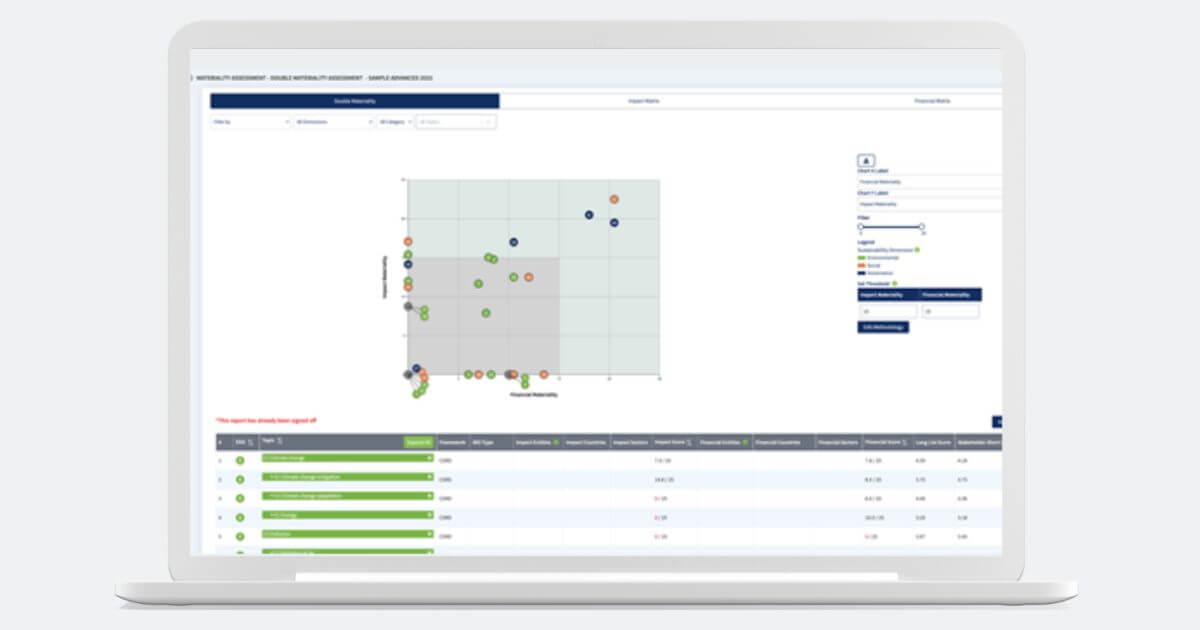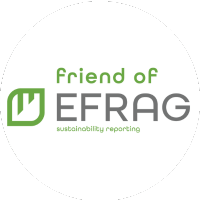Double Materiality Reporting – a complete solution
Double Materiality Assessment
Create your company’s materiality matrix report
Identify and prioritize the sustainability issues that impact your business and stakeholders with ESG Playbook’s Double Materiality Assessment Module, aligned with ISSB, GRI, and CSRD standards for stronger strategic and financial decision-making.
Key Benefits
ESG Playbook’s advanced materiality and risk tools help you engage stakeholders, meet CSRD requirements, and integrate sustainability into core business strategy. Our platform connects assessments, goal-setting, and assurance for a streamlined, compliant, and impact-driven approach.
Stakeholder-driven sustainability engagement
Engage stakeholders on key Sustainability material topics, ensuring alignment with business priorities and regulatory expectations.
CSRD-compliant double materiality assessments
Perform double materiality assessments to meet CSRD regulations, integrating both financial and impact-based Sustainability risks.
Industry-specific & customizable insights
Access sector-specific guidance or tailor your own Sustainability topics to ensure a relevant and strategic approach to materiality.
Advanced risk management & board oversight
Enhance risk assessment, annual reporting, and governance by incorporating insights from 3,000+ Sustainability risk factors.
Climate risk scenario analysis & automation
Leverage third-party climate risk models to map physical and transition risks, supporting data-driven decision-making.
Integrated sustainability strategy & assurance tools
Seamlessly connect materiality assessments with policy frameworks, goal-setting modules, and audit-ready assurance tools for full compliance.
One Platform
Comprehensive Sustainability Reporting. Simplified for you.




